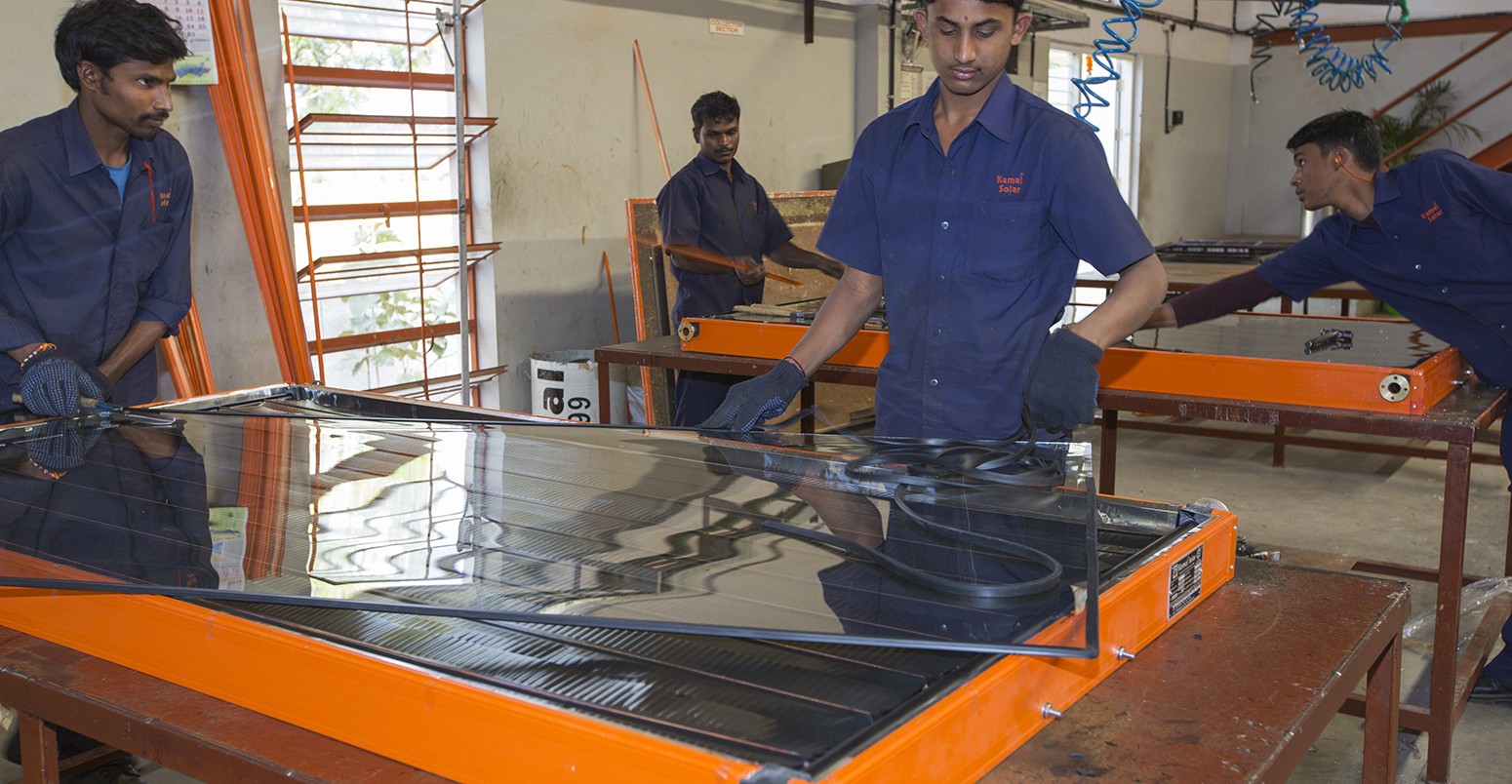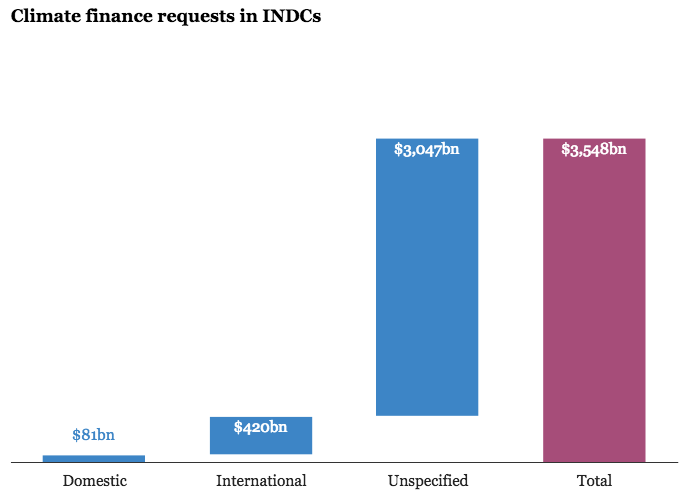
Analysis: Developing countries need $3.5 trillion* to implement climate pledges by 2030
Sophie Yeo
12.09.15Sophie Yeo
09.12.2015 | 11:28amCarbon Brief analysis shows that developing countries need around $3.5tn to implement their UN climate pledges up to 2030. (*Caution: important caveats apply to this headline total. See below.)
Over the course of the past year, 186 nations have come forward with “intended nationally determined contributions” (INDCs), spelling out how they intend to tackle their emissions and adapt to the impacts of climate change.
In September, Carbon Brief started to track and calculate the financial implications of these pledges, adding up the money developing countries say they will need to implement their INDCs.
As the UN climate talks in Paris edge towards a conclusion, with all but ten nations having submitted their pledge, we can now release the final figure.
The costs — or “investments”, as some might call it — described in INDCs add up to $3.5tn. From this, $2.5tn has been requested by India alone. The remaining $1tn is made up of financial estimates submitted by 72 other developing countries in their INDCs. (For clarity, by trillion we mean a million million, or 1,000 billion.)
From this $3.5tn total, $420bn is explicitly requested to come from international sources of finance, including public money, private investments and carbon markets. Meanwhile, developing countries have pledged to spend $81bn from their domestic budgets.
Both of these figures cover the period up to 2030. This averages out to requirements of around $42bn a year of international funding between 2020 and 2030 — the year the agreement comes into force, and the period covered by many INDCs (there are also some that cover the period 2015 to 2030, making this a rough average).

Carbon Brief analysis of INDCs.
Finance debate
The debate on this issue has becoming increasingly heated during the Paris negotiations.
The price tags attached to the INDCs could be a factor in determining how much climate finance developed countries have to provide to poorer nations in the future.
Prior to 2020, the landscape on climate finance is fairly clear — developed countries have promised to provide $100bn a year by the end of the decade.
One element of the Paris deal will be to decide what happens after this. Nations are unlikely to agree to another quantified sum. But it is generally accepted that the agreement will see them scale up financial provisions in one form or another.
The current draft of the agreement includes the option that new money should be provided after 2020 “in line with needs and priorities identified by developing country Parties”.
It also explicitly proposes that the extent to which developing countries implement the agreement will depend on the support provided by developed countries, explicitly setting finance in the context of the INDCs.
Many of the INDCs include conditional elements that are contingent upon receiving international financial support. Calculations showing INDCs could limit global warming to 2.7C depend on the conditional elements of the pledge being fully implemented.
Pa Ousman Jarju, Gambia’s minister of environment and climate change, tells Carbon Brief:
Multilateral climate finance must be linked to the INDCs, particularly for the Least Developed Countries, as funding is needed to deliver the required, or conditional, aspects of our national climate plans. Adaptation finance should also be channelled through the LDC Fund, which is set up to better serve the world’s poorest and most vulnerable nations.
Carbon Brief tracker of financial pledges in the INDCs
Methodology and caveats
In fact, the figure produced by Carbon Brief’s analysis only represents a fraction of the sum that the INDCs will cost to implement.
A large number of countries have said they will require financial assistance to implement their commitments, but have yet to put a specific number to it, often as a result of pending analysis.
Others have said exactly how much they think their INDC will cost, but have not said how much of it will come from their domestic budgets, and how much from international sources of finance, leaving a large chunk of uncategorised financial requirements.
This is not to say that all of the international slice will have to come from the public coffers of foreign governments. Many of the INDCs recognise that there are a variety of financial sources, including the private sector and carbon markets.
There are also financial benefits that this final figure does not take into account. Some INDCs point out that climate-related investments can save on costs elsewhere, including reduced need for fuel and reduced damage in the case of climate-related disasters.
Carbon Brief’s figure may only be a snapshot, based on limited figures from the early stages of the progress, but it is a sign of how climate finance might need to be pieced together over the coming decade and beyond.
Main image: The Kamal factory in Bangalore, Karnataka, India that manufactures solar thermal panels for heating water. Credit: © Ashley Cooper/Corbis.
-
Analysis: Developing countries need $3.5 trillion* to implement climate pledges by 2030

